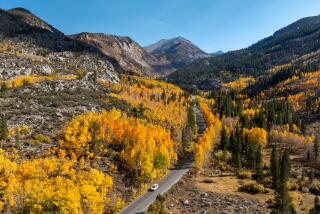Best places to see wildflowers -- right now! -- in Death Valley National Park
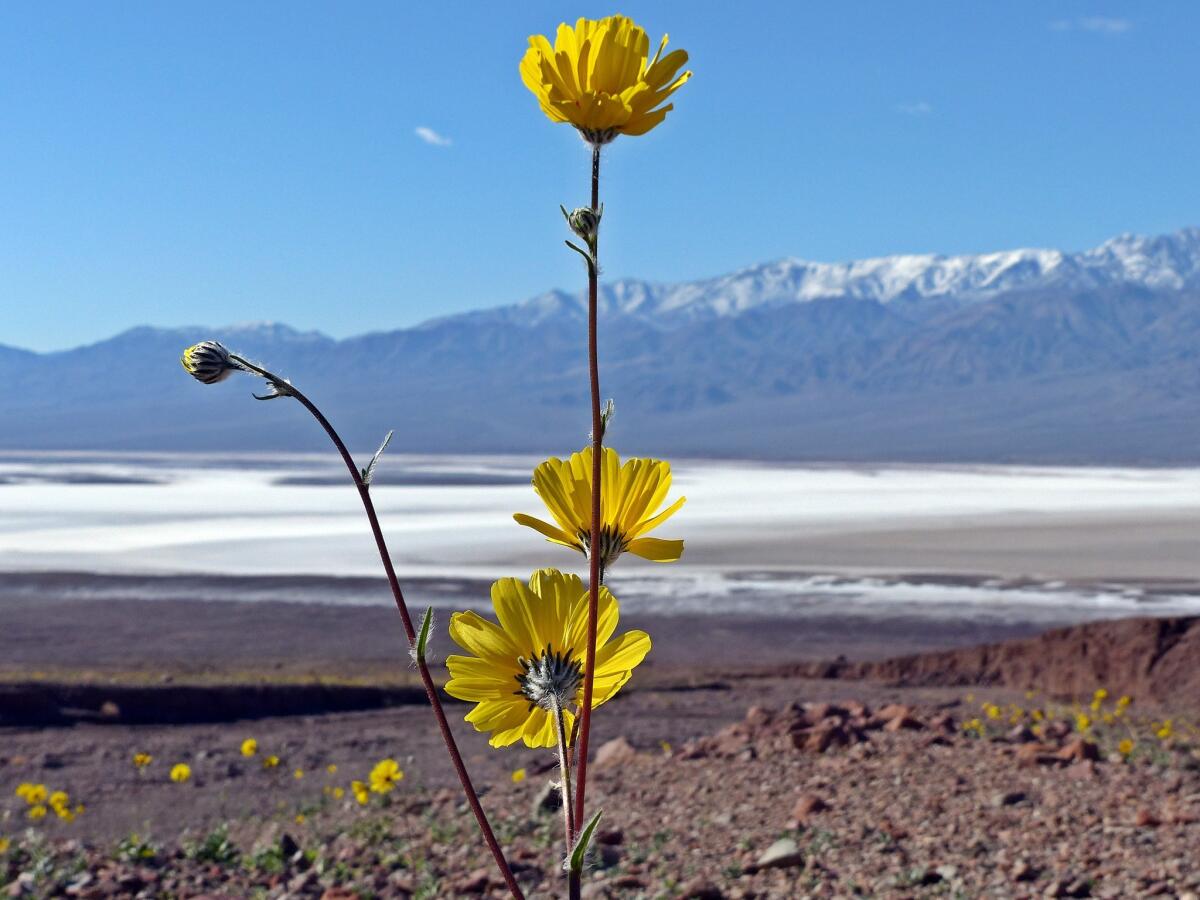
Wildflowers are already putting on a show at Death Valley National Park. Here, goldfields pop above Badwater Basin.
- Share via
To the friends who asked: “Why Death Valley? What is there to do there?”
I answer: Wildflowers. OK, yes, stark, stunning landscapes. But, now, especially, wildflowers.
Thanks to heavy rains that sparked flash floods in October and the late January moisture, Death Valley National Park and its surroundings are alive and blooming.
The brown, arid landscape is now spectacularly interrupted as desert gold (Geraea canescens) is popping up, especially along Badwater Road between the Inn at Furnace Creek and Badwater Basin, Artists Drive, Hells Gate and near Salt Creek.
On a recent two-night trip to the valley floor, and armed with the National Park Service’s handy guide, I (and other camera-wielding flower lovers) wandered through various locations (Insider tip: To best experience the diversity, definitely get out of the car and walk.) and also spotted these varieties:
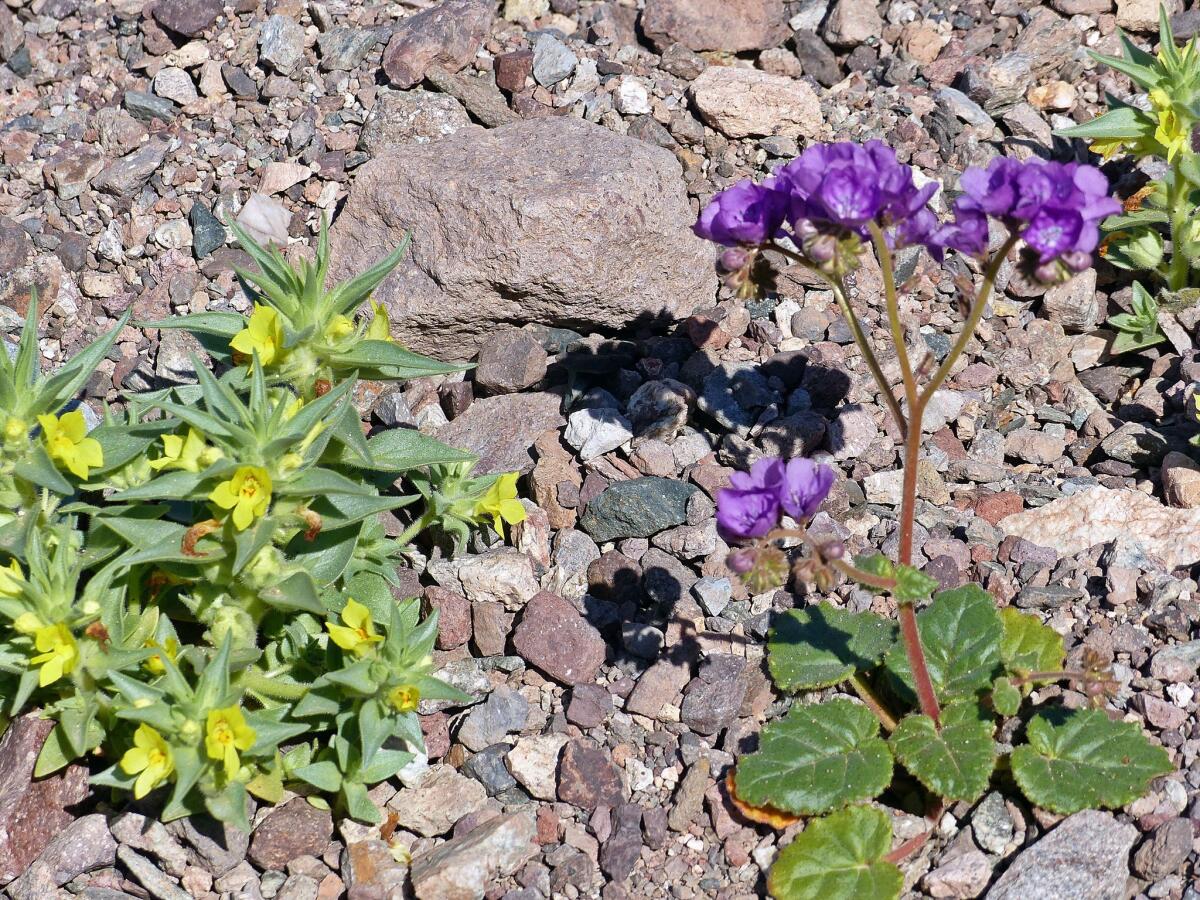
Lesser Mojavea, left, and phacelia bloom side by side in Death Valley National Park.
-- Badwater Road: Notch-leaf phacelia (Phacelia crenulata), desert sand verbena (Abronia villosa) and brown-eyed evening primrose (Camissonia claviformis). There are plenty of places to pull off on either side of the road, and flat vistas for flower spotting.
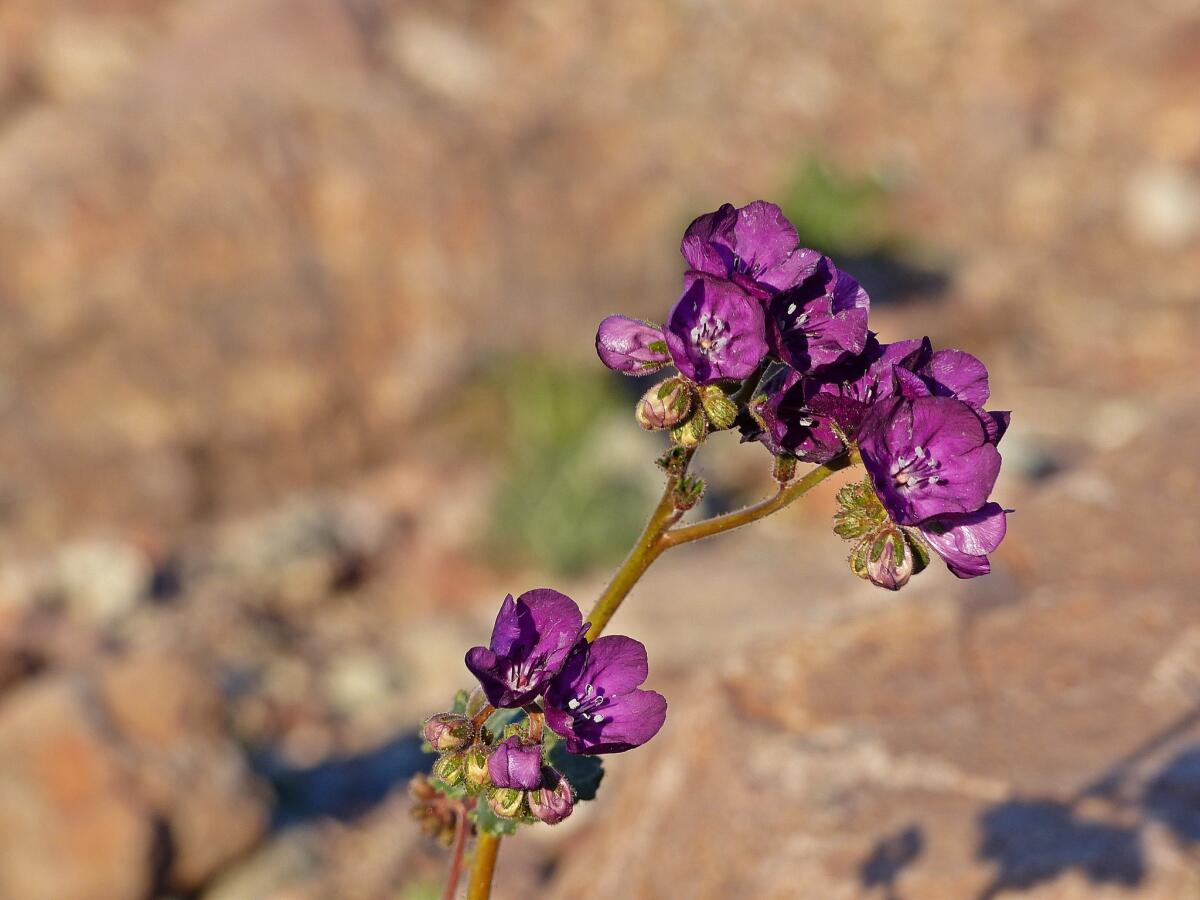
Notch-leaf phacelia adds deep magenta to the landscape along Badwater Road.
-- Artists Drive: Brown-eyed evening primrose, desert sand verbena and notch-leaf phacelia again. But also purple mat (Nama demissum), lesser Mojavea (Mojavea breviflora) and pebble pincushion (Chaenactis carphoclina) along the scenic road through the grand, aptly named palette of colorful rock formations. (Insider tip: The wildflowers are wonderful, but don’t forget to look up too.)
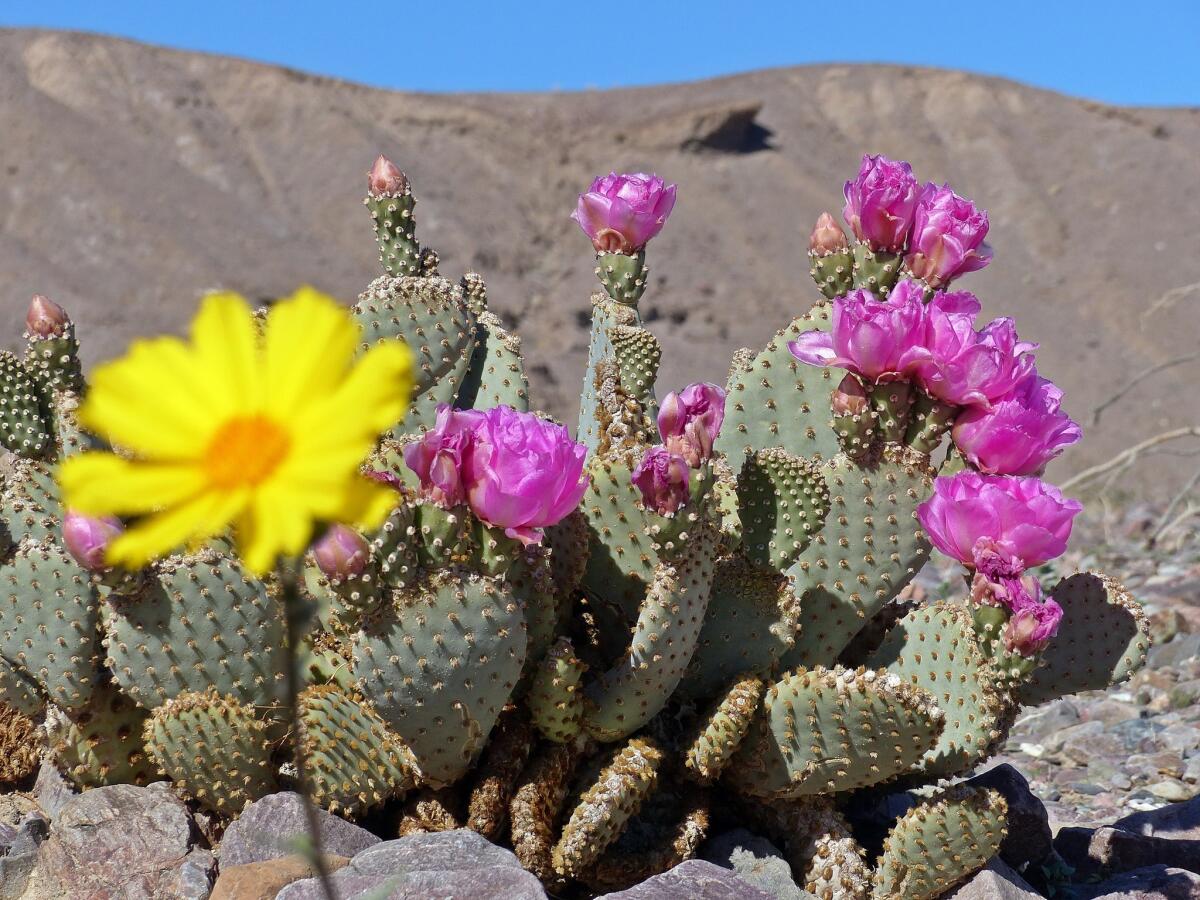
Eye-catching beavertail cactus grows near Hells Gate in Death Valley National Park.
-- Hells Gate: As you climb the low hills and near the rest stop, look for toothed dodder (Cuscuta denticulata) and the magenta blooms of the beavertail cactus (Opuntia basilaris) in addition to the others. Then take in the amazing views, from the snowcapped mountains to the shimmering (not water but salt) flats on the valley floor, to the towering sand dunes at Mesquite Flats.
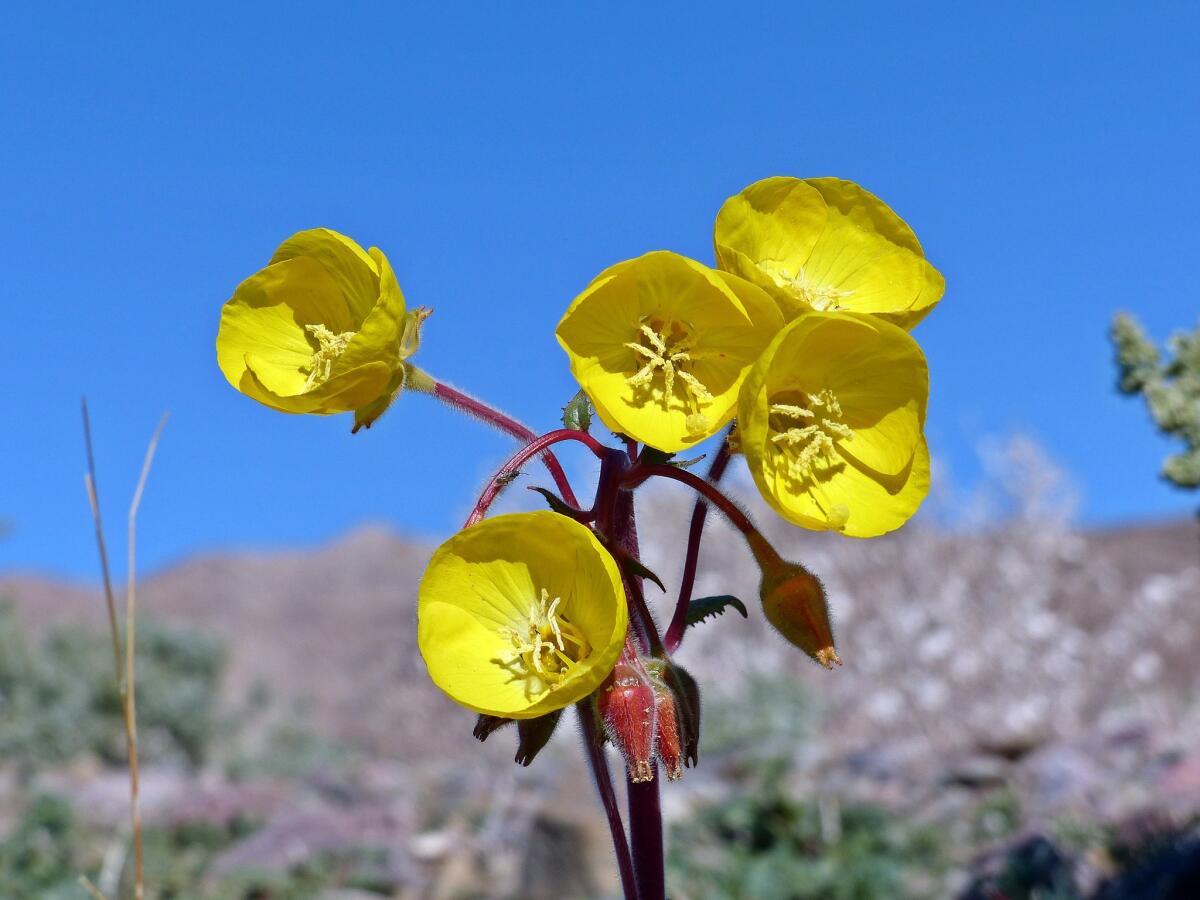
Golden evening primrose (camissonia brevipes) also blooms near Hells Gate.
-- Salt Creek: As you approach the end of the dribbling stream, the desert gold and evening primroses are in a race here. And the birds are in abundance (though no sign of those elusive pupfish).
The National Park Service kept promising “even more spectacular blooms” on Badwater Road south of the basin toward Ashford Mill, but that road was closed while we were there. (Check the Death Valley Road Conditions Facebook page for daily updates.)
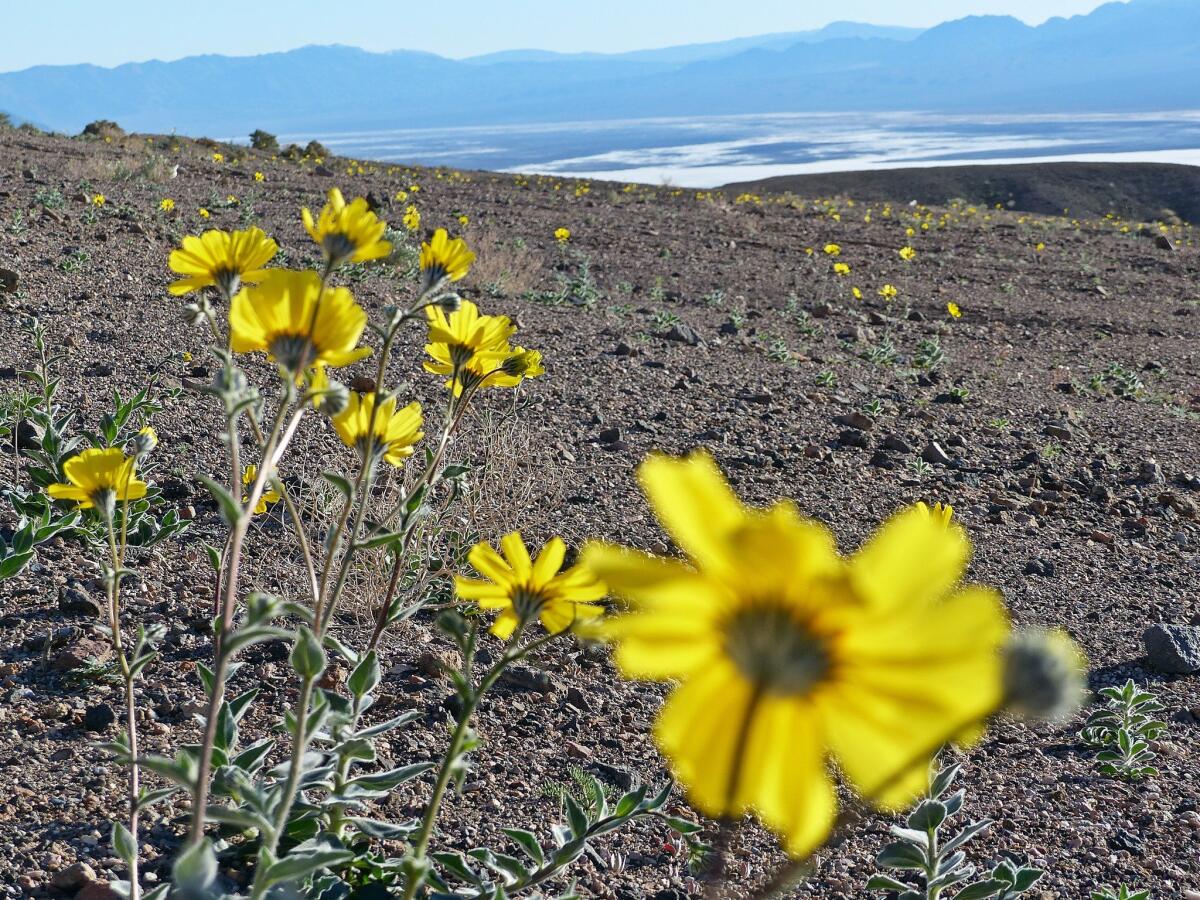
Desert gold wildflowers overlook Badwater Basin in Death Valley National Park. The blooms are supposed to last through late March or early April, according to park officials.
Even with a few closures -- Dante’s View (short-term) as well as the ongoing washed-out road to Scotty’s Castle -- there’s plenty to do in February in the 3-million-plus acres (yup, about the size of Connecticut, advises the ranger) of this natural wonder.
And though this flower display won’t last forever (it’s Death Valley for a reason), the park service predicts that the bloom will continue through late March or early April.
Our favorites this temperate visit (last time we came through it was August, and 118 degrees at Furnace Creek) included: scenic (but moderate) hikes at the brown/rose/greens of Desolation Canyon and the Natural Bridge. Short walks through the puddles at Badwater Basin and the boardwalk at the now-flowing Salt Creek.
Top it off with a swim at the warm spacious pool at the Inn at Furnace Creek, followed by a walk in the inn’s gardens or dinner at its fine dining room.
Info: Death Valley Wildflower Update 2016
ALSO:
National park visits are climbing -- especially (wait for it) at Joshua Tree
Celebrating our national parks
The latest buzz on flying drones in state and national parks: Rules can still be vague
California’s national parks: A photographic history seen through The Times’ archives
More to Read
Sign up for The Wild
We’ll help you find the best places to hike, bike and run, as well as the perfect silent spots for meditation and yoga.
You may occasionally receive promotional content from the Los Angeles Times.


